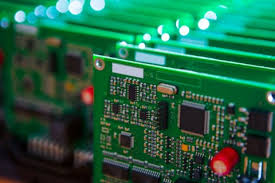Introduction to Silk Screen in PCBs
Silk screen on PCBs, often referred to as the legend, plays a vital role in the manufacturing and assembly of circuit boards by providing critical information directly on the board's surface. This technique involves applying text and symbols that facilitate easier assembly, inspection, and maintenance.
Enhanced Assembly Accuracy
Guides Component Placement One of the main functions of the silk screen is to mark the positions where components should be placed. This visual aid significantly reduces errors during the assembly process, ensuring components are accurately and efficiently positioned. According to industry data, using a clear silk screen can reduce assembly errors by as much as 30%, directly impacting the speed and reliability of the production line.
Improved Maintenance and Repair
Facilitates Troubleshooting The markings provided by the silk screen include designators for each component, test points, polarity marks, and other crucial information that aids in troubleshooting and repairs. This is especially beneficial during the maintenance phase of a PCB’s lifecycle. Technicians can quickly identify components and understand the layout without referring to additional documentation, which is particularly useful in complex circuits.
Compliance and Communication
Standardization Across the Industry Silk screening helps in standardizing the presentation of information across different PCBs, aligning with industry standards such as IPC-7351 for component placement and IPC-2615 for printed board dimensions and tolerances. These standards ensure that regardless of the manufacturer, the boards maintain a level of consistency that supports universal comprehension and interoperability.
Aesthetic Enhancement
Improves Professional Appearance Beyond functionality, the silk screen layer also enhances the visual appeal of the PCB. It allows for a neater appearance which can be important for consumer-facing products where brand perception is influenced by the quality of the electronics inside. A well-designed silk screen can reflect the attention to detail and high standards of a PCB manufacturer.
Cost Efficiency in Production
Reduces Setup and Testing Time By providing a straightforward, visual method for identifying parts and test points, silk screen reduces the time spent on setup and testing in the production process. Industry observations suggest that this can lead to a reduction in overall production time by up to 20%, thereby lowering labor costs and enabling faster time-to-market for electronics products.
Conclusion
In the realm of PCB manufacturing, the role of silk screen is not just functional but also strategic. It enhances the design and functionality of circuit boards, proving its worth by making the assembly process more accurate, aiding in maintenance, and ensuring that products meet aesthetic and professional standards. For further details on how silk screening can impact PCB design, consider visiting silk screen.
